#the great blue hole
Text
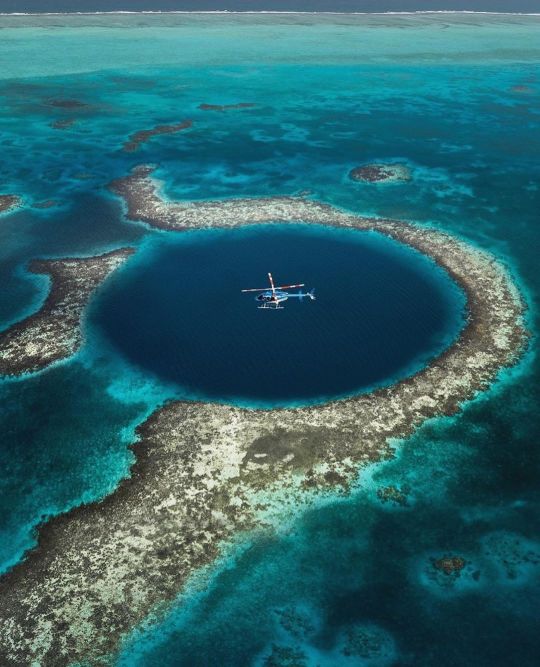
Flying over the Great Blue Hole, a giant marine sinkhole off the coast of Belize.
It's more than 300m long, 125m deep and filled with marine life.
#the great blue hole#beaches#beach#belize#sea#travel photography#travel#amazing nature#travel destinations#nature
114 notes
·
View notes
Text

you ever done it underwater? 🤭
#perfect butt#girl butts#sexy content#great butt#cutie w a bootie#big bootie#ass tease#girls who lift#bikini butt#blue bikini#beach bikini#underwater#girls who squat#great bum#spank my bum#my butt#lick my hole#lick every inch#touch my body#amazing body
1K notes
·
View notes
Text
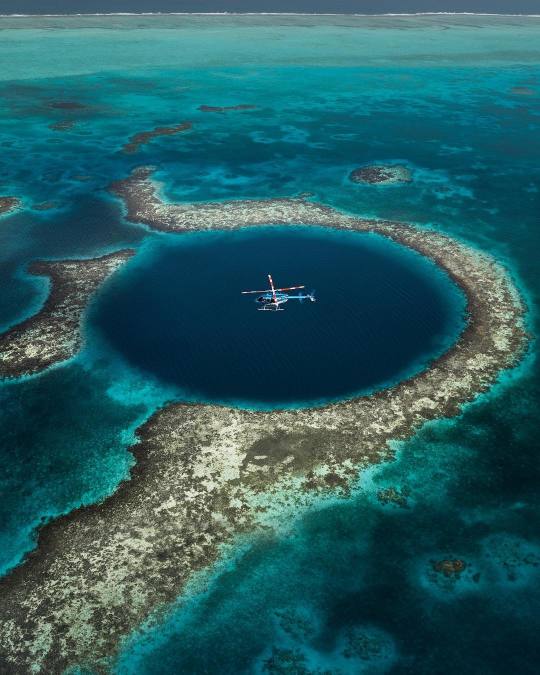
By Emmett_Sparling
Great Blue Hole, Belize
#curators on tumblr#belize#sea#ocean#blue#aerial#landscape#nature#central america#north america#travel#great blue hole#emmett sparling
301 notes
·
View notes
Text
I see a lot of people have made covers of the snippet of Everybody's Waiting (the new JO track)
I may do it too but at the same time I am hesitant given that I am 90% sure they won't see it (since everything else I'd ever made have never been noticed by them - Bojan's big share yesterday included) and if by chance it is getting seen I am not sure how I'd feel having the first thing noticed by them be just another cover
I am probably overthinking things again
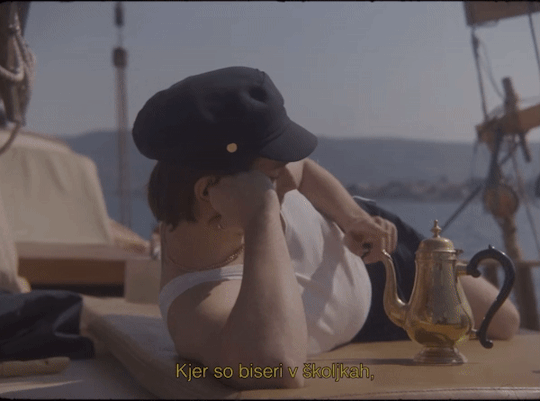
#so here's the t in the tags (aka me ranting)#I have not felt great about my art or my contribution to the joker out and käärijä fandom recently#I have honestly felt like an art block is coming#the few things I have been able to create just doesn't feel good to me#and I don't get the same satisfaction of sharing it either#Ik I should be grateful for whatever faves and views it gets but I cannot help but feel underappreciated#which in turn doesn't make me feel motivated to make more#the last few days I have actually been more drawn to playing my guitar and writing songs than creating artwork#so that is what I've been doing#in that regard creating a little cover would maybe be fun#and yet I fear I'd fall into the same trap as with the art#that now I might make something to share with the fandom it has stakes#and in the end the stakes will be too high since I cannot help but compare what I make#and so I will lose interest in making music as well#honestly I feel kind of lost#I have had days I just stop working for half an hour to several hours#falling down an unproductive rabbit hole where I just stare out into the blue or at a youtube video#I don't want to be here#I want to love what I do and love sharing it with you again#but after a pretty productive and somewhat decent january#I now feel meh about it all#thank you for reading my tag novel#I will go now#micahs thoughts#micahs foolery
10 notes
·
View notes
Text
youtube
This was my single childhood Barbie: Jewel Secrets Barbie.
#Barbie#Jewel Secrets Barbie#commercials#toys#videos#Youtube#honestly the purse / skirt was not great#since it didn't have holes for her legs#but I liked her blue ruffle thing#I gave it to my MLPs
18 notes
·
View notes
Text
Dzisiaj już w pracy - we wtorek wróciliśmy z Egiptu. Upały straszne, ogólnie całkiem fajnie. Wykupiliśmy kilka wycieczek żeby nie siedzieć tylko w hotelu. Jedzenie ok, nic nas nie złapało, rafy i rybki piękne 😄 Wakacje udane i teraz już jakieś pojedyncze wypady jak się trafią 🙂





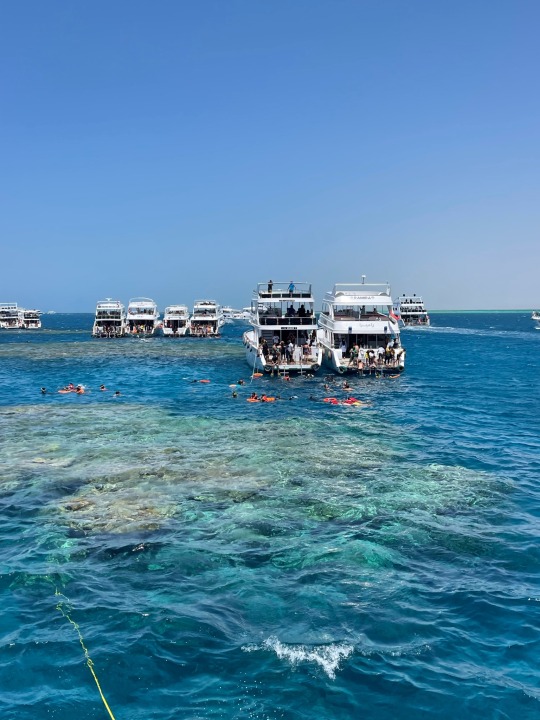

16 notes
·
View notes
Text

had something of a conversation this morning
#did you know that a lot of people use pictures of the great blue hole for the mariana trench?#they aren't even in the same ocean!!#the great blue hole is horrifying enough!! leave her alone!!
49 notes
·
View notes
Text
thinking about my ocs again. it would be sooo fucked up if you were pyre actually
#imagine being at the brink of heat death and this red flower offers you life and water and stuff in exchange for you working for it#and . it doesnt sound too bad of a deal tbh#and one day you wkae up with a bandaged hand and under that bandage is a fuckinhg HOLE in your hand#and youre starting to forget stuff. and youre starting to act different#youre startign to lose yourself. but you have noooo idea thats even happening#you feel fine! you feel better than youve ever felt before! this is so great! right?#and one day you look in your reflection and you dont see yourself anymore. once blue eyes turned red with a 5 petal flower forever imprinte#on your eye to mock you for the rest of time. and that isnt Fucking You#and then you forget it the next morning. and then the flower fucking Gets You#sorry. im ahving a moment#maurposting#oc#pyre#aahahha . anyways#hes also a dilf. completeyly unrelated#everytime he comes close to realizing just how fucked up he is. flower takes over#i mean one day he will eventually be free. but Man that shit fucked him up sooooo bad#almost two decades of his life completely gone. and he cant even recognize himself anymore#is there a tag limit. this is getting really long actually
2 notes
·
View notes
Text

A team of high profile explorers went on a discovery mission to one of the world's most breathtaking locations, the Great Blue Hole of Belize. This round formation in the middle of the Caribbean waters is almost 420 foot deep and its deep azure color stands in contrast to the bright turquoise water surrounding it.
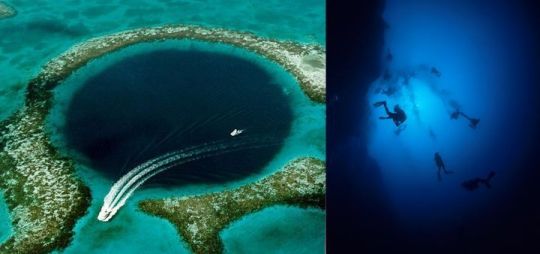
Images by agiampiccolo / Depositphotos, via Wikipedia
The depths below this beautiful oceanic scene held never-before-seen secrets, and the team was eager to be the first to discover them. What they found at the bottom of this dark pit was surprising and extremely troubling.
Not all divers plunge to the depths of the ocean. Deep underwater diving can be risky and requires a great deal of experience. The Cousteau family, descendants of legendary diving pioneer Jacques Cousteau, has this sort of experience.
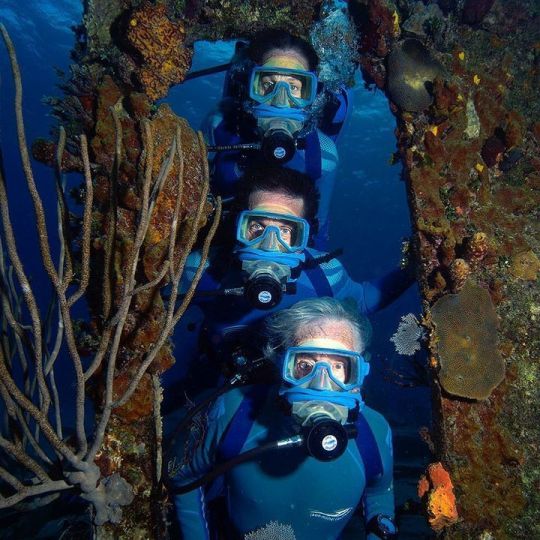
Image by @fcousteau / Instagram
Jacques's grandson, Fabien, is a life-long oceanic explorer, diving to the murky depths and documenting ancient shipwrecks, sharks, and other deep-ocean mysteries. But even this experienced diver was caught speechless when he finally got the opportunity to dive into Belize's Great Blue Hole.
Located in Belize's eastern coast is the Belize Barrier Reef, the second largest reef network in the world and a significant portion of the ecosystem we know as the Mesoamerican Barrier Reef.
Second only to Australia's Great Barrier Reef, the Mesoamerican Barrier Reef's northern tip stretches to Mexico's Yucatán Peninsula, while the south tip is in the south of Honduras.
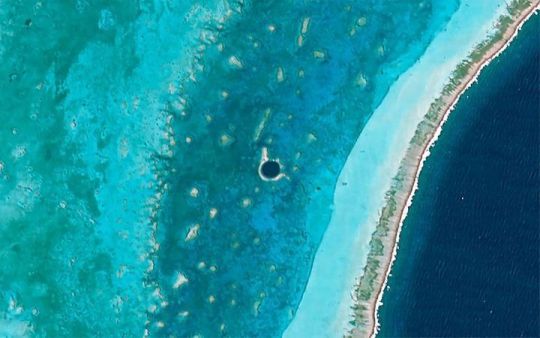
The reef network's Great Blue Hole is a dark spot situated right in its center, tempting researchers and explorers alike to dive into the ocean deep.
A truly stunning natural phenomenon, the Blue Hole is effectively irresistible to scuba divers. Located in the Lighthouse Reef, the small formation is found in the eastern part of the Belize Barrier Reef.
Despite its enormous radius, it's not safe and extremely challenging to dive down the Blue Hole. A minimum of 24 dives are required for those wanting to attempt to delve into its mysterious depths.
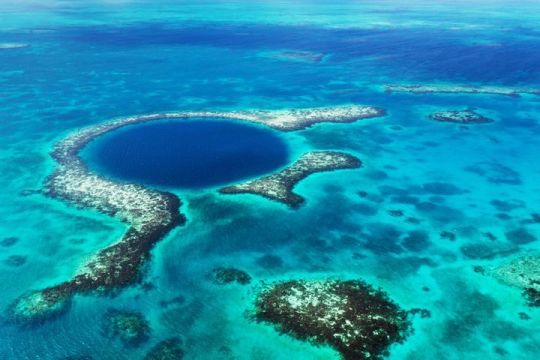
And so, while the top part of this oceanic pit became a popular diving attraction, its dark depths remained unexplored.
Jacques Cousteau visited the Great Blue Hole in 1971 and rated it as one of the top five diving locations in the world. Still, the famous explorer only got to experience the top-most area of the hole, as he was using 1970s diving equipment which was relatively low-tech.

Image by @fcousteau / Instagram
This meant that for his grandson, Fabien, the mission of diving down the Blue Hole was more than a professional challenge, it was his legacy. With advanced equipment, the Cousteau mission could go much further than ever before.
The Blue Hole expedition included a couple more A-listers besides Fabien Cousteau. The explorer was also joined by the famous conservationist and adventurer Sir Richard Branson. The billionaire, who is owner of the Virgin Group and Virgin Oceanic - a fleet of underwater vehicles - was very keen to come along.
Another member of the explorers' team was Erika Bergman, an oceanographer who was the designated pilot of the team's submarine, Aquatica.
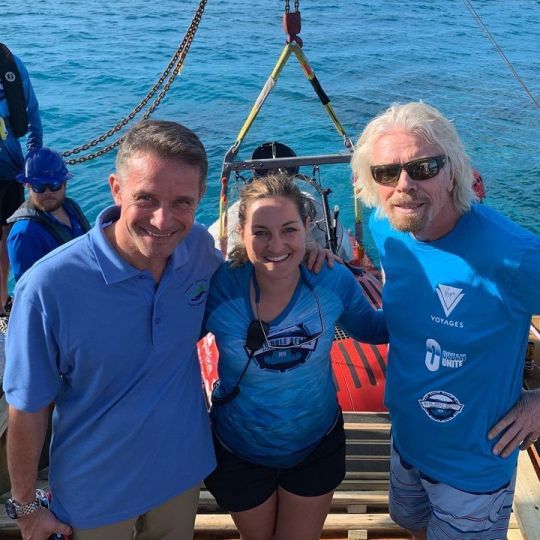
Image by @fcousteau / Instagram
The excited team went on their mission feeling positive, but this attitude did not last and their return was quite grim.
The legendary explorer, Jacques Cousteau, believed that people protect what they love. Following his approach, Sir Richard Branson aims to make the oceans more accessible, while also protected.

Image by @richardbranson / Instagram
Hugely successful in his business, Bronson invests a lot of money in raising awareness and fighting climate change. He does this through running programs with educational purposes about ecological sustainability. He also hosts global warming summits at his private home on the British Virgin Islands.
Though not the deepest hole in the ocean, the Blue Hole's one-of-a-kind form and geological composition make diving to its deeper end a rare moment in history. The hole was said to be a sort of planetary inner space, and of course, the mission enjoyed never before seen media coverage, including the team's live stream broadcast on the Discovery Channel.
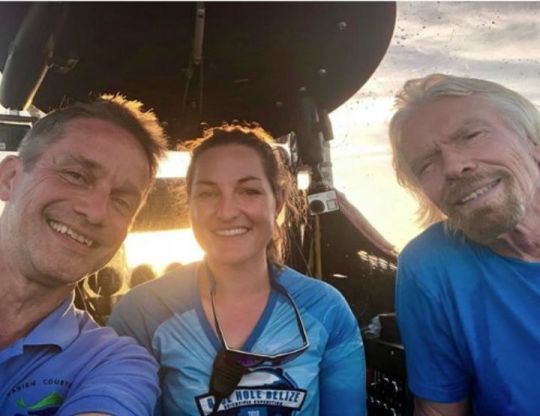
Image by @richardbranson / Instagram
As the preparations were being made, and with the camera rolling, Branson, Cousteau and Bergman's historical journey could being.
The type of buzz the mission to the Great Blue Hole created was not unlike the one surrounding film director James Cameron's adventure to the bottom of the deepest point in the oceans, Mariana Trench, as part of his research for his Avatar films.
Since the crew of the Aquatica would be delving to a shallower depth, the viewing dome of the vessel was much larger, creating a comprehensive visual experience for its passengers.
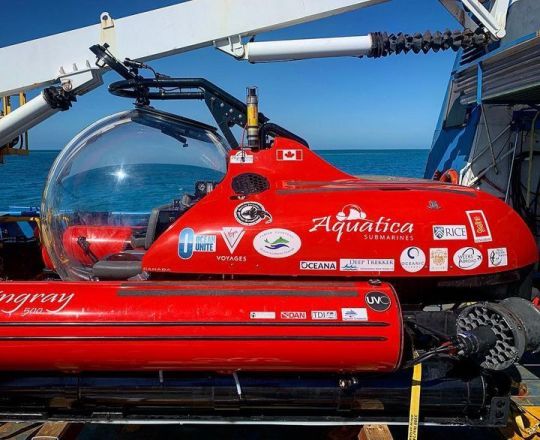
Image by @fcousteau / Instagram
And these visuals were very much spectacular as the submarine was diving down into the deep blue water and along cliffs and other rock formations.
When it initially dived into the ocean, the Aquatica caused some sediments in the water, which made it cloudy and impeded visibility. Once the sediment eased, the view was one of geological wonder, including numerous caves of stalactites hanging from the rocks.
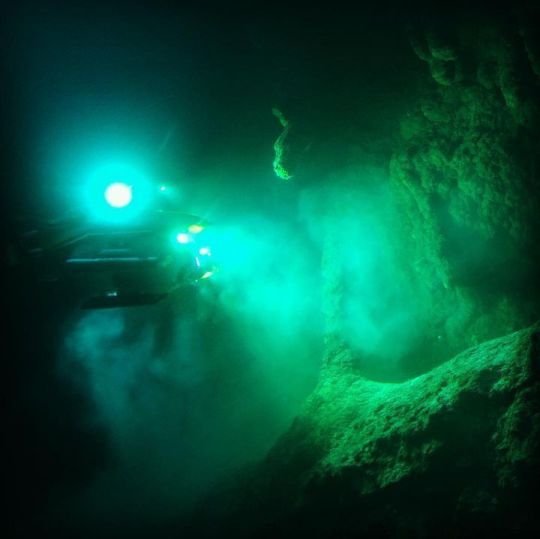
Image by @fcousteau / Instagram
On the ground, stalactites are not uncommon. They are created by mineral-rich water dripping slowly from one rock face to another for centuries. The minerals are collected and dry until they become a formation. But how was it possible for the minerals to dry at a depth of 20 meters under water?
The Ice Age
The underwater stalactites had meant one thing to the crew, as Sir Richard Branson put it, it was “one of the starkest reminders of the danger of climate change” ever witnessed.

The cave system with the stalactites used to be above water, but with sea levels rising at the end of the last Ice Age, the water of the Caribbean rose quickly, covering large spans of land. This was evident by the change in color of the rocks found 200 feet underwater, marking the previous sea level prior to the sea levels rising.
Solving Age-Old Mysteries
Being as deep as it was, and as untouched, other teams have visited the Blue Hole before the Aquatica crew.

Hoping to collect useful information through geological samples inside the giant sinkhole, a research team from Rice University and Louisiana State University has previously descended into the hole as part of their attempts to answer age-old questions about another mysterious location miles away: the jungles in Central America. These teams gathered rock samples at various depths within the Blue Hole.
Reading the Rocks
The scientists from Rice University and Louisiana State University were looking into one of humanity's greatest mysteries: the disappearance of Mayan culture. This advanced ancient kingdom spanned across Central America, including Belize, but we have yet to explain why the Mayans abandoned their magnificent cities. But how could an underwater expedition answer this question?

Looking at the chemical composure of the rock, the scientists from the previous expedition found lower than expected levels of titanium and aluminum in the rock samples. This meant the decline of Mayan culture could have been the result of a long lasting drought.
Floating Toxicity
About 30 meters below the surface of the water, the Aquatica had to face an extraordinary challenge: at this depth there was a 20-foot floating layer of hydrogen sulfide-rich water. This substance was not only deadly to any living creature, but could easily bite into and destroy metal.

In the cave surrounding this toxic layer, the explorers found many forms of marine life that got caught in the poisonous waters and died. This would normally mark the boundary of any descent down the Blue Hole, but the Aquatica was built to survive this substance and the dive down continued.
Pioneers
After diving past rock formations, stalactite caves, and toxic water, the Aquatica reached the bottom of the hole, something no manned vessel ever accomplished before.
The team was excited to start mapping the area in the hope of progressing scientific research, with Fabien Cousteau being the most excited. This expedition meant he was not only following his grandfather's footsteps, but also expanding them.
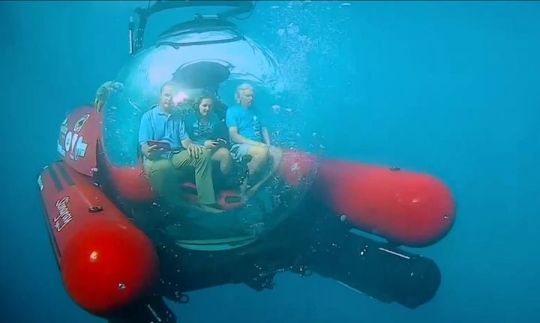
But the far side of the hydrogen sulfide barrier did not only reveal geological findings, but also other, very disturbing discoveries.
A Horrifying Discovery
From the surface, looking down into the Blue Hole revealed nothing but the deep and untouched blue water. But the reality at the bottom of this pit was starkly different. To the team's heightening concern, the floor of the Belize Blue Hole was lined with plastic bottles, bags, and more litter. Humanity's impact here was no different than anywhere else in the ocean.

This saddened the team, as they realized that beyond voicing their concerns, a horrifying discovery like this should not be simply passed over. Something had to be done!
A New Mission Born
Rather than making historical discoveries about parts beyond the reach of humans, the biggest discovery of this expedition ended up being a new record for human pollution. This was indeed a horrifying finding, particularly since plastic, a human invention that became widespread and popular only in the middle of the 20th Century, was destroying parts of the planet that were untouched well before the Ice Age.

Branson was adamant about the need for action and joined forces with a conservationist conglomerate called Ocean Unite in order to start saving the Blue Hole, as well as the blue planet.
Conserving Oceanic Territories
The official goal of Ocean Unite is to reserve at least 30 percent of the planet's oceans as protected areas by 2030, making any damage done to them carry serious legal consequences. The mission in the Blue Hole wasn't Branson's first action as a member of Ocean Unite, but it provided him with enough evidence that this area deserved better.
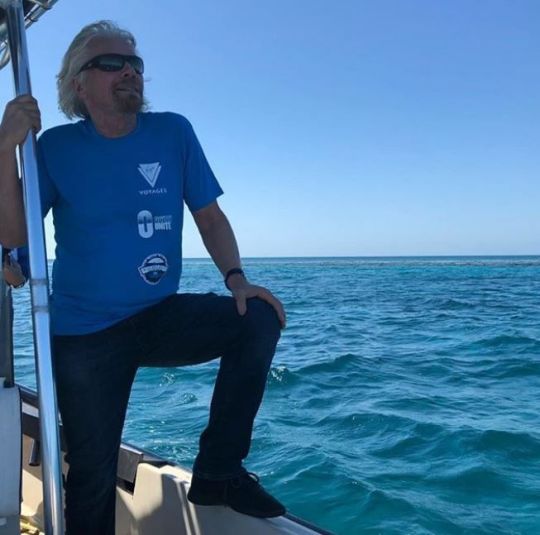
The billionaire met with the prime minister of Belize and his wife, hoping to convince them to declare 10 percent of Belize's oceanic territory as protected area. This would conserve and protect these ecosystems from any damage, including industrial pollution.
A Pledge to the Future
Still bothered by the findings at the bottom of the deceptively untouched Blue Hole, Branson set out some changes with his own companies in order to rectify the damage. As soon as he returned from Belize, and following the pledge made by its prime minister, he declared his airlines would stop the use of single-use plastic on their flights.
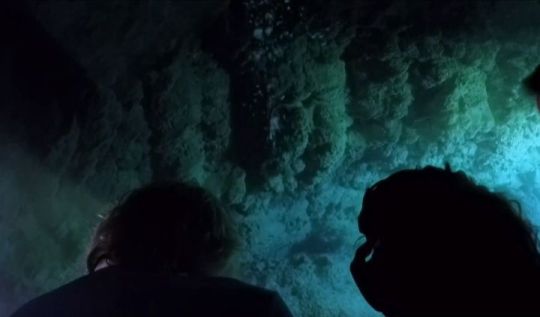
His motivation for this and other steps, according to him, was the thought of his grandchildren living in 2050 in their thirties, in a world without remaining natural treasures.
Lemur Island
Ocean Elders is a group of individuals who are influential in the fields of business, entertainment, and art, who are devoted to heightening awareness to issues regarding the environment.
Famous members include Fabien Cousteau's father, Jean Michel Cousteau, Neil Young, Jackson Browne, and Sir Richard Branson. Bronson is a key member and has a strong resume of fighting for the environment.
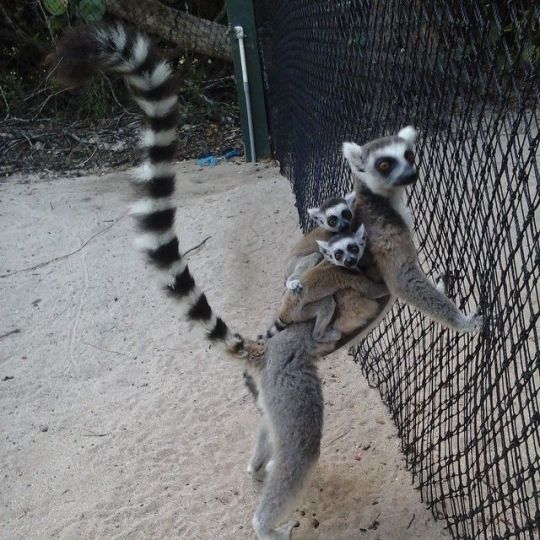
He is the founder of several NGOs and non-profit organizations dealing with environmental issues and even founded the Special Award for the Environment. He also bought an entire Caribbean island dedicated to the conservation of ring-tailed lemur in Madagascar.
Plastic Waste
One of the biggest environmental disasters the planet is facing is plastic waste. Branson and many other powerful people have been pooling their resources to fight the damage done by plastic. Big names like Branson and James Cameron, as well as less known individuals who work and volunteer in grassroots movements, are joining forces to fight the good fight and try and clean our oceans.
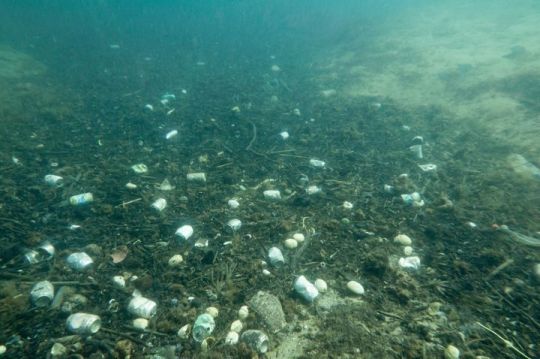
Other blue holes face similar threats to the Belize Blue Hole. A blue hole in Egypt faces a similar situation, and poses a different kind of danger as well.
The Red Sea's Blue Hole
Spanning between Israel at its north tip and Yemen at its south, the Red Sea is the world's most northern tropical sea. Famous for its clear blue water, magnificent coral reefs, and a high level of biodiversity, the Red Sea is a popular diving destination, particularly around the Sinai Peninsula.
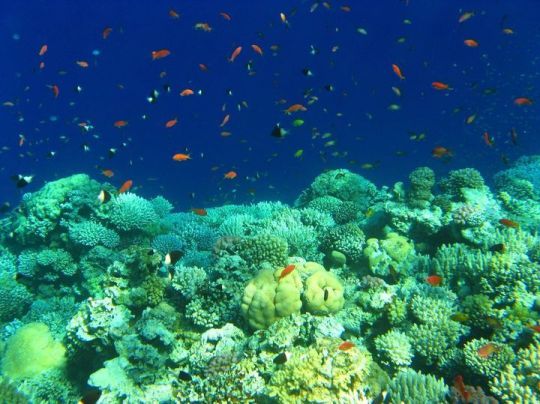
North of Dahab on the Sinai coast in Egypt is located the Red Sea's Blue Hole. While it's not as big as the one in Belize, it has a dire reputation…
Risky Business
Sinai's Blue Hole is much easier to reach than the one in Belize, which requires a boat trip. Located just a few kilometers north of the Dahab beaches, it's accessible by swimming.

But don't get the wrong idea - this proximity does not make diving an easy task. In fact, its easy access and the fact that it lacks a strong current preventing divers from reaching it, makes it all the more tempting and thus - all the more dangerous.
Notoriously Dangerous
The Blue Hole in Sinai has a reputation for being extremely dangerous. In order to get permission to access it, you must be an experienced diver and be accompanied by a local guide. This reputation is due to one specific spot along the sinkhole, nicknamed "The Arch," a tunnel running under the reef, and linking the Blue Hole to the sea.
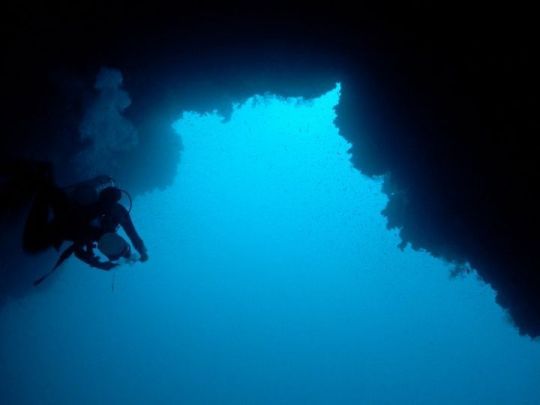
Due to the tunnel's depth and complex form it's easy to get confused. This has happened to many divers, and they often end up experiencing nitrogen narcosis, which causes disorientation and in some cases, death.
Divers Beware!
The complexity of the arch and the nitrogen narcosis-caused disorientation and hallucinations makes it a necessary condition for divers to be experienced before exploring Sinai's Blue Hole.
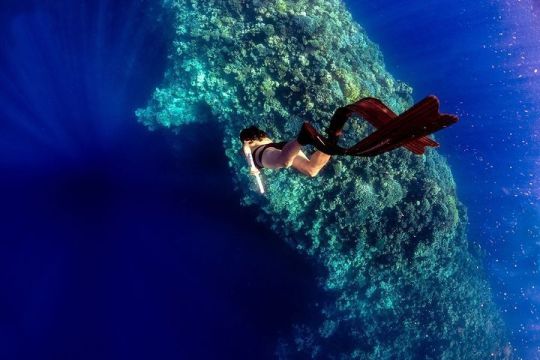
The dive site is one of the world's most dangerous diving spots and is estimated to have cost more than 200 scuba divers their lives. However, while the site is clearly very dangerous to divers, the damage caused to the Blue Hole by people's use of single use plastic is vastly greater.
The Deepest Hole
It was a surprise for the three explorers in the Aquatica to see such a remote spot like Belize's Blue Hole impacted so severely by pollution. However, it is not even the most remote location where human-made litter can be found.

One such point is the Mariana Trench, the world's deepest point in all its oceans. When explorers delved to the bottom of this deep pit, they found fascinating underwater creatures and geological formations, but also a noticeable amount of plastic, man-made waste.
Plastic Isn't Fantastic
A project dedicated solely to the documentation of underwater pollution is the Deep-Sea Debris Database, where divers share their knowledge for the greater good. The database is constructed by collected information about garbage that divers come across with during their diving trips.
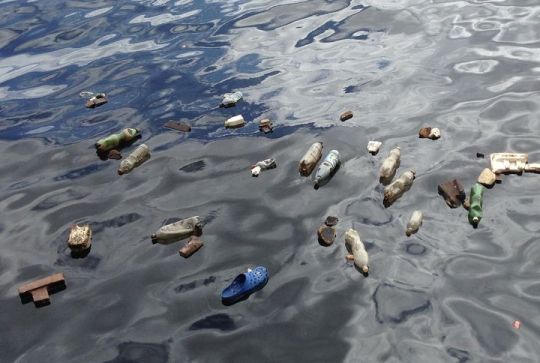
The most common material registered in the database is plastic. Less popular are rubber, cloth, metal, and processed wood. 89% of the plastic documented in this project comes from disposable items such as bottles and plastic utensils.
Wake Up Call
Multiple research vessels have been sent by NOAA, the United States' National Oceanic and Atmospheric Administration to document the floor of the Mariana Trench. The pollution is devastatingly visible through their photos, with 78% of them showing sea creatures disturbed or entangled in bits of plastic.
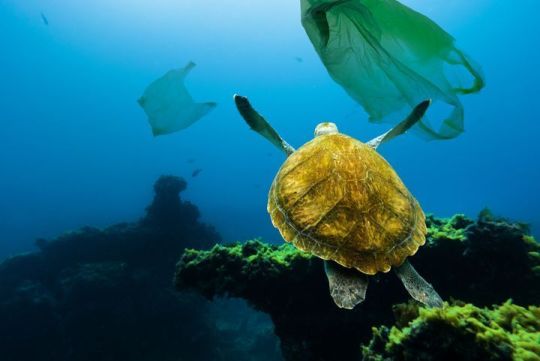
How is it possible that plastic debris, products of human society, is found in what is quite literally the most remote location on the planet? The Mariana Trench is so far removed from human civilization the data is simply astounding. A wake up call, if ever there was one.
Where Is It All Coming From?
The pollution in Mariana Trench has been measured in a recent study indicating a higher rate than some of the most polluted waterways in China. This situation occurred by plastic breaking down to tiny particles that float downwards more easily than actual plastic products would. These small bits of debris end up on the floor of the Trench.

But it's not just garbage that's dumped straight into the sea that makes up ocean pollution. Waste thrown into rivers and even underground currents in countries nowhere near the sea may end up in the ocean.
An Island of Plastic
Just about the size of Texas and located on a stretch of water between California and Hawaii is the Great Pacific Garbage Patch. This is not an island made of plastic objects but rather, a massive patch made of tiny plastic particles which are in effect broken down in the form of plastic flakes.
TO READ THE REST OF THE ARTICLE CLICK HERE - AS WE REACHED TUMBLRS LINK LIMIT
#The Horrible Truth Lurking At the Bottom of Belize's Great Blue Hole#Belize#deep water holes#Great Blue#Great Blue Hole
2 notes
·
View notes
Text

The Terraforming, Benjamin H. Bratton
#hello theys in my computer. we are talking about the black hole photo again.#i love this apart from the terrifying bit. i think its beautiful. if u can find peace in the blue dot u can find peace in the black hole#isnt it great that we can see this + know the camera is between us and it. what a relief! what dismay. to never be spaghettified. hopefully#astral#reading
2 notes
·
View notes
Text
me for the majority of the night:

me remembering that my grandma gave me a quilt that was handmade in the 60s by my great grandma:

#do u guys ever feel like. intensely connected with an object#bc she gave this to me when they were visiting yesterday and i was like..oh. yeah. this Feels Right#this Feels Correct.#this is my hole it was made for me but like..about a blanket that was made like 50 years ago#its all... dark blue and pink and its got hearts sewn into it its so. waaugh#anyway. im having. a night#loki got into the garbage and ate a bunch of shit and i dont know what he ate so im like. panic awake for the next few hours for sure#and imnlike. the last few days ive just had this intense like. need. yearning. to just. take a break.#im not even DOING anything. theres nothing to take a break FROM. ive been ACTIVELY AVOIDING responsibilities#but i still feel like i need a break. whats the move here.#i wanr 2 put my body on autopilot and not exist for like a few days i think that would fix me. just fuckjn. zap on outta here#im drawjng a bunch of weird fish. btw. will post those in the morning. i have never done anythig. like this before#im just. drawing random ass shapes and adding eyes and tails to them. not even lookin at actual fish. this is so unlike me#but also like. accidentally drew the cutest sea serpent and catfish ever#ughghghhhgyggygyghg#anyway. blanket time. idk. back to that for a sec. lookin @ this thing and it just. feels right. yeah#mine now. thanks great grammy ily#delete later
4 notes
·
View notes
Text
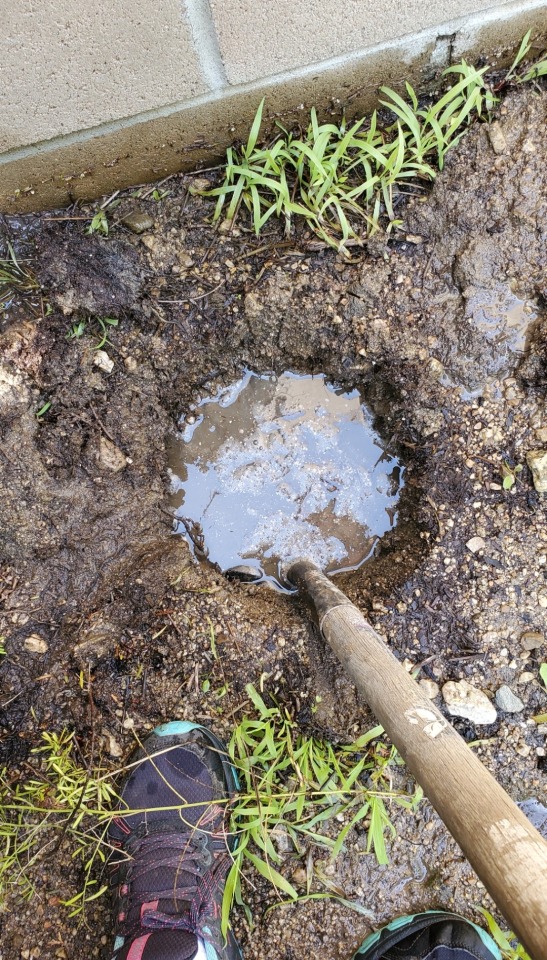
There is about six inches of standing water in this nine inch hole. Our yard is saturated to the point that it can't absorb any more and more rain is coming this week. I had hoped to get all the new plants from yesterday planted today but only got one rose and the vegetables planted; I didn't account for having to widen the trench I dug a month ago, nor did I expect it to not help. That wound up taking up a lot of my time and energy, so the annuals will have to wait until Monday to go into the ground and the raised beds. At least we're out of our drought for now.
#adventures in gardening#i managed to finally get my blue girl rose planted and got the drainage holes drilled into the new big pots for the patio#have to wait on the long planter because I set some succulents into it temporarily and the bees love them#my whole yard is full of happy little bees right now#everything is flowering and growing which is great#i also planted 'midnight snack' 'dances with smurfs' and 'san marzano' tomatoes and a purple bell pepper#and I'm once again trying to grow a cucamelon#the pumpkins i planted after halloween are starting to sprout and with luck will be very productive#still need to get the carnation and pansies planted along with purple and white sweet alyssums and a 'vavoom' rose#and hope the water doesn't rot everyone's roots this year
2 notes
·
View notes
Text
Normal is getting dressed in clothes that you buy for work, driving through traffic in a car that you are still paying for, in order to get to a job that you need so you can pay for the clothes, car and the house that you leave empty all day in order to afford to live in it.
#the world we live in#what are we even doing#break free#change the system#social conditioning#mind conditioning#wake up everybody#brainwashing#life quotes#relatable quotes#one world order#the matrix#the red pill#the blue pill#down the rabbit hole#the great awakening#life reminders#change your thinking#time for a change#change quotes#quotes to think about#life is a journey#spiritual awareness#spiritual awakening#find your purpose#deeper meaning#real world#rat race#everyday life#robots in disguise
13 notes
·
View notes
Text
Belize Barrier Reef
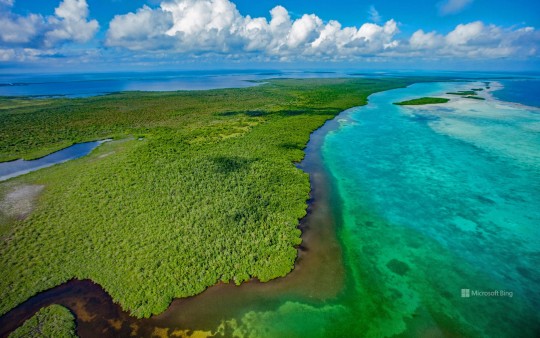
One of the greatest marvels of the marine world, the 300-kilometre-long Belize Barrier Reef is located along the Central American country's Caribbean coast. It's part of the larger Mesoamerican Barrier Reef System that runs from Mexico's Yucatan Peninsula to Honduras and is the second-largest reef in the world behind the Great Barrier Reef in Australia. Declared a UNESCO World Heritage site in 1996, it's remained relatively healthy even as many of the planet's reefs are threatened by climate change.
Featured here is a mangrove forest on Lighthouse Reef, one of three major atolls (above-water sections of reef that form ringlike, often lush island chains) in the reef system. It's the most visited of the atolls for one reason: Near its centre is the Great Blue Hole, a marine sinkhole that's 318 metres across, 124 metres deep and a bucket-list destination for scuba divers. Now protected within the Blue Hole Natural Monument, the hole was made famous when oceanographer Jacques Cousteau charted its depths in 1971.
The barrier reef is Belize's most popular tourist attraction, a destination for diving and fishing as well as sightseeing. One of the most biodiverse places in the world, the system includes more than 400 cays or islands, mangrove forests, coastal lagoons and estuaries, and is the only place in the Western Hemisphere where you’ll find coral atolls.
3 notes
·
View notes
Text
Beneath the Surface: Best Places for Deep-Sea Diving
The ocean, with its vast expanse and mysterious depths, holds a world beyond imagination. For those willing to venture into its enigmatic realm, the world offers a plethora of dive sites, each with its own unique allure and challenges. From the abyssal trenches to vibrant coral reefs, let’s embark on a journey to uncover some of the most exhilarating deep-sea diving destinations on the…

View On WordPress
#abyss#adventure#Bahamas#Belize#bioluminescent creatures#Blue Hole#Celebes Sea#Challenger Deep#circular shape#Conclusion#crystal-clear visibility#crystalline waters#deep-sea dive sites#deep-sea research missions#Diving Experience#Egypt#Environment#extreme depth#geological formations#Great Blue Hole#high-pressure environment#historical wrecks#intrepid divers#limestone stalactites#limestone stalagmites#Malaysia#Mariana Trench#marine biodiversity#Micronesia#mystery
1 note
·
View note
Text
get you a guy who reminds you of morning winter sunlight glinting off of kitchen surfaces. not my boyfriend tho he's taken
#snowswords#cosmic#I'm assigning you imagery. it's this#goes great with your self-assigned imagery of lakes. black holes. crows. shorts (only pants if forced). navy blue. emerald green. khaki.
0 notes